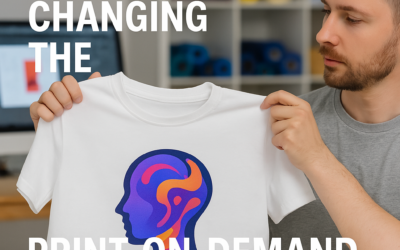How Technology is Shaping the Future of Education
“Empowering Minds: The Digital Revolution in Education”
Technology is revolutionizing the landscape of education by transforming traditional classrooms into dynamic, interactive learning environments. This change goes beyond a passing trend—it represents a fundamental shift that is redefining teaching methods and learning experiences. Today’s digital tools help create personalized, engaging, and efficient education tailored for the demands of the 21st century.
Personalized Learning for Every Student
One of the most significant benefits of integrating technology into education is the ability to customize learning experiences. Adaptive learning technologies—such as intelligent tutoring systems and learning management systems—allow educators to tailor their instruction to the individual needs of each student. By leveraging data analytics, these systems monitor progress and provide real-time feedback, enabling teachers to quickly identify areas where students may need extra support. This personalized approach not only increases engagement but also improves overall learning outcomes.
Expanding Access to Quality Education
Online learning platforms and digital resources are breaking down geographical and social barriers, making high-quality education accessible to students worldwide. Whether you are in a remote area or juggling multiple responsibilities as a working professional, technology opens doors to flexible learning options. Virtual classrooms and self-paced online courses provide the opportunity for anyone to learn on their own schedule, empowering adult learners and underserved communities alike.
Enhancing Interactive and Immersive Learning
The classroom experience is becoming increasingly interactive thanks to cutting-edge technologies like virtual reality (VR) and augmented reality (AR). VR enables students to immerse themselves in historical events or explore distant planets, creating learning experiences that traditional textbooks simply cannot match. Meanwhile, AR overlays digital information onto the real world, helping students grasp complex concepts with greater clarity. These innovations not only make learning more engaging but also help improve information retention.
Fostering Collaboration and Communication
Digital tools are also enhancing collaboration in the classroom. Collaborative software, social media, and online discussion forums provide platforms for students to work together, share ideas, and offer mutual feedback. This approach mirrors the modern workplace, where teamwork and effective communication are vital skills. By integrating these tools into education, students are better prepared for the collaborative demands of the professional world.
Addressing Challenges in the Digital Education Revolution
Despite many benefits, the digital transformation in education comes with significant challenges. Issues such as digital equity, data privacy, and the need for comprehensive teacher training must be addressed. Not all students have access to the necessary devices or reliable internet connectivity, which highlights the importance of ensuring equal opportunities for learning. As technology continues to evolve, it is crucial for educators and policymakers to work together to bridge these gaps and create an inclusive educational environment.
Conclusion
Technology is playing a pivotal role in shaping the future of education. By enabling personalized learning, expanding access to quality education, enhancing interactivity, and fostering a collaborative environment, digital tools are creating more effective and engaging educational experiences. As we navigate this digital transformation, addressing challenges like digital equity and data privacy becomes essential to ensure that every student can thrive in a modern learning landscape.
Q&A
-
Question: How is artificial intelligence (AI) transforming the educational landscape?
Answer: AI is revolutionizing education by providing personalized learning experiences, automating administrative tasks, offering intelligent tutoring systems, and delivering data-driven insights that help improve teaching strategies and student outcomes.



